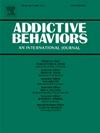阿片类药物相关病耻感干预措施的多样性:系统综述
IF 3.6
2区 医学
Q1 PSYCHOLOGY, CLINICAL
引用次数: 0
摘要
在美国,阿片类药物使用障碍(OUD)是一种高度污名化的、使人衰弱的疾病,影响着数百万人,污名化是治疗参与、保持和结果的主要障碍。OUD和阿片类药物过量使用方面的差异对边缘化社区产生了不成比例的影响,强调迫切需要采取了解文化的减少污名化干预措施,解决各种交叉形式的歧视和卫生不公平问题。本综述审查了针对与肥胖相关的耻辱感的干预措施,重点关注这些举措的多样性和文化相关性。方法:根据PRISMA指南,我们回顾了截至2025年5月发表的描述阿片类药物/ oud相关耻辱感干预措施的文章。结果大多数研究的目标是医疗服务提供者或公众污名,涉及学生、医疗保健专业人员或涉及司法的个人。然而,人口统计代表性不一致,对种族、民族、性别认同或性取向的关注有限。68%的研究纳入了文化因素,最常见的是通过纳入有过OUD经历的个体。这是第一个专门研究阿片类药物相关耻辱干预措施中的文化因素的综述。虽然取得了显著进展,但差距仍然存在,特别是在持续收集社会人口数据和设计量身定制的干预措施以解决交叉污名和有意义地参与边缘化社区方面。为了解决这些差距,未来应采取包容性招聘策略,应用交叉框架,并与社区合作,整合生活经验。这些在文化上知情的方法,在这里被定义为响应受影响人群的文化认同、价值观和社会背景的策略,可以支持制定和评估减少耻辱的干预措施,更好地为不同人群服务。本文章由计算机程序翻译,如有差异,请以英文原文为准。
Diversity in opioid-related stigma interventions: A systematic review
Background
Opioid use disorder (OUD) is a highly stigmatized, debilitating condition affecting millions in the U.S., with stigma posing a major barrier to treatment engagement, retention, and outcomes. Disparities in OUD and opioid-involved overdoses disproportionately impact marginalized communities, underscoring the urgent need for culturally-informed stigma reduction interventions that address intersecting forms of discrimination and health inequities. This review examined interventions targeting OUD-related stigma, focusing on the diversity and cultural relevance of these initiatives.
Methods
Following PRISMA guidelines, we reviewed articles published through May 2025 that described interventions addressing opioid/OUD-related stigma.
Results
Most studies targeted provider or public stigma and involved students, healthcare professionals, or justice-involved individuals. However, demographic representation was inconsistent, with limited attention to race, ethnicity, gender identity, or sexual orientation. Sixty-eight percent of studies incorporated cultural considerations, most commonly through the inclusion of individuals with lived OUD experience.
Conclusions
This is the first review to specifically examine cultural factors in interventions addressing opioid-related stigma. While notable progress has been made, gaps remain—particularly in the consistent collection of sociodemographic data and in the design of tailored interventions that address intersectional stigma and meaningfully engage marginalized communities. To address these gaps, future efforts should adopt inclusive recruitment strategies, apply intersectional frameworks, and collaborate with communities to integrate lived experiences. These culturally informed approaches, defined here as strategies that are responsive to the cultural identities, values, and social contexts of affected populations, could support the development and evaluation of stigma reduction interventions that better serve diverse populations.
求助全文
通过发布文献求助,成功后即可免费获取论文全文。
去求助
来源期刊

Addictive behaviors
医学-药物滥用
CiteScore
8.40
自引率
4.50%
发文量
283
审稿时长
46 days
期刊介绍:
Addictive Behaviors is an international peer-reviewed journal publishing high quality human research on addictive behaviors and disorders since 1975. The journal accepts submissions of full-length papers and short communications on substance-related addictions such as the abuse of alcohol, drugs and nicotine, and behavioral addictions involving gambling and technology. We primarily publish behavioral and psychosocial research but our articles span the fields of psychology, sociology, psychiatry, epidemiology, social policy, medicine, pharmacology and neuroscience. While theoretical orientations are diverse, the emphasis of the journal is primarily empirical. That is, sound experimental design combined with valid, reliable assessment and evaluation procedures are a requisite for acceptance. However, innovative and empirically oriented case studies that might encourage new lines of inquiry are accepted as well. Studies that clearly contribute to current knowledge of etiology, prevention, social policy or treatment are given priority. Scholarly commentaries on topical issues, systematic reviews, and mini reviews are encouraged. We especially welcome multimedia papers that incorporate video or audio components to better display methodology or findings.
Studies can also be submitted to Addictive Behaviors? companion title, the open access journal Addictive Behaviors Reports, which has a particular interest in ''non-traditional'', innovative and empirically-oriented research such as negative/null data papers, replication studies, case reports on novel treatments, and cross-cultural research.
 求助内容:
求助内容: 应助结果提醒方式:
应助结果提醒方式:


